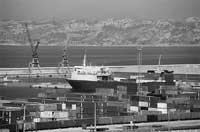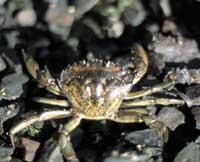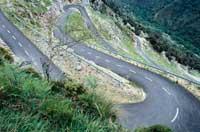Ships and the environment, an invention to protect them together
2002/03/24 Carton Virto, Eider - Elhuyar Zientzia
But it is not the only reason. In addition to stability, there is a reason for safety. After emptying the oil from the tanks, explosive vapors are generated that, in some way, must be expelled to avoid explosions. Gasoline trucks also have the same problem. At the moment, the most effective way to evacuate these gases is by filling the tanks with water. On the other hand, ships do not always transport the same product, so before emptying one product and loading with the other, clean ballast tanks with seawater.
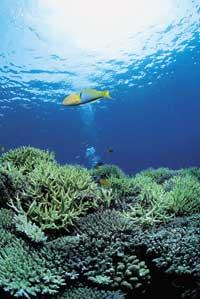
But the water is corrosive and destroys the boat. In addition, in the water there are many living machines and their transport is dangerous. And it is that nobody can know if these species will die thrown in the waters of the new port or vice versa. Naturally, the good conditioning of the species generates great ecological problems. For this reason, ships that make long trips are asked to change the ballast water before their arrival at the port. But this requirement is met by very few, as it takes time and the packaging can lose balance.
However, the oxidation of the ship and the transport of living beings from one side to another are such disparate problems that the researchers did not wonder if they could have the same solution.
Do not oxidize boats
In recent years, numerous shipwrecked vessels have caused great ecological disasters (Erika in Brittany, Ievoli in the La Mancha channel, Jessica in the Galapagos Islands). According to experts, rust is one of the main causes of these serious boat accidents. Shipowners do not have enough time to repair the ship.
The giant ship loses money for every day that passes in the port and the goal of the shipowner is to make the boat profitable. Therefore, you have no choice but to make basic repairs and go ahead in the hope that the boat will not sink.
It seems that the simple and economical way to combat oxidation will come from the hand of Japanese engineers. Being the cause of rust the free oxygen dissolved in the water, it was proposed to add nitrogen to reduce the levels of free oxygen. His idea, more specifically, is to border the nitrogen from the air into the water of the ballast tanks of the ships. Thus, free oxygen in the water binds to nitrogen and does not harm the boat. Of course, this treatment was not expected to be also effective in preventing biological contamination.
Farewell to invasive species
But while the Japanese worked on it, biologist Mario Tamburri tried to solve the problem of invasive species unintentionally introduced in the aquarium of the Californian bay of Monterry.
Invaders who have entered unintentionally travel many times thanks to human beings. For example, there are insects that move glued to the wheels of the car (remember the controls that have been put last year on the wheel disinfection limits? ), but as already indicated, in most cases the means of transport are ships.
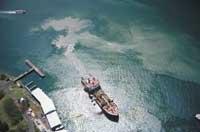
For example, in the Great Lakes between Canada and the United States it has been observed that some species of mussels, fish and fleas arrived by boats. Subsequently, small passenger ships have spread throughout the continent.
But fortunately this problem can also be solved before further damage occurs. In fact, by chance, biologist Mario Tamburri found Japanese work and thought it could be a solution to his problem. He not only thinks, but has made some experiences without wasting time and has analyzed the influence of this treatment on three marine animals. Fortunately, he has seen that the larvae of crabs, mussels and worms that have become invaders in the United States die in two or three days. The duration of the cruises is weeks.
Although he still has to do more research, he believes that other animals and some plants and fungi will also die. Bacteria, however, can also live without oxygen, so with this method you can not avoid invasion completely, but it is the beginning.
In addition, this solution has a major advantage. Captains who do not take into account the problem of invasive species, at least not to oxidize their boat, will see with good eyes that the water is treated as such, since, according to the researchers, it can mean an economic saving for the owners of the ships. In fact, with the installation of a plant that will capture nitrogen from the air and border it in ballast water, it is estimated that between 70,000 and 80,000 dollars a year can be saved.
Published in the supplement Estación de Gara.

Gai honi buruzko eduki gehiago
Elhuyarrek garatutako teknologia




